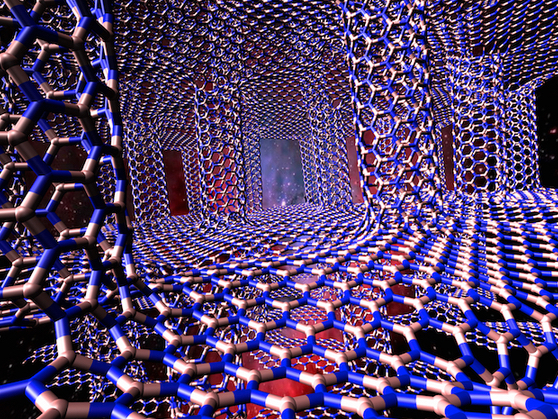The wonder material graphene has recently tackled another dimension and found another exciting application for the future of technology. If your phone has ever overheated on a hot day, you’re going to want to read this.
Hexagonal boron nitride (h-BN), a similar element to graphene known as white graphene, is an electrical insulator. Normally a 2-D material, in a newly proposed, complex 3D lattice structure, white graphene has serious heat withstanding capabilities. In most materials used to create electronic devices, heat moves along a plane, rather than moving between layers to dissipate more evenly, which frequently results in overheating. This is also the case with 2-D hexagonal boron-nitride, but not the case when this same element is simulated in a 3-D structure.
Rouzbeh Shahsavari and Navid Sakhavand, research scientists at Rice University, have just completed a theoretical analysis that produced a 3-D lattice-like white graphene structure. It uses hexagonal boron nitride and boron nitride nanotubes to create a configuration in which heat photons move in multiple directions—not only over planes, but across and through them as well. This means that electrical engineers now have the opportunity to move heat through and away from key components in electronic devices, which opens the door to significant cooling opportunities for many of the electronic items we use daily, from cell phones to massive data server storage facilities.
In an interview with Fortune, Shahsavari clarifies this process even further in an explanation about 3-D thermal–management systems. Essentially, the shape of the material, and its mass from one point to another, can actually shift the direction of the heat’s movement. Even when the heat is more inclined to go in one direction, a switch is created that shifts the direction in reverse, better distributing heat through the object. The boron-nitride nanotubes are what enable the transfer between these layers to occur.
For most of us, this just means that in the near future we may be able to worry less about our smartphones and tablets overheating. For engineers it may mean an entirely new approach to cooling through the use of white graphene, which could potentially provide a better or alternative solution to cooling mechanisms like nanofluids. Those interested in an incredibly complex scientific explanation can read more about how this dimensional crossover works here or here.
photo credit: Shahsavari Group/Rice University
